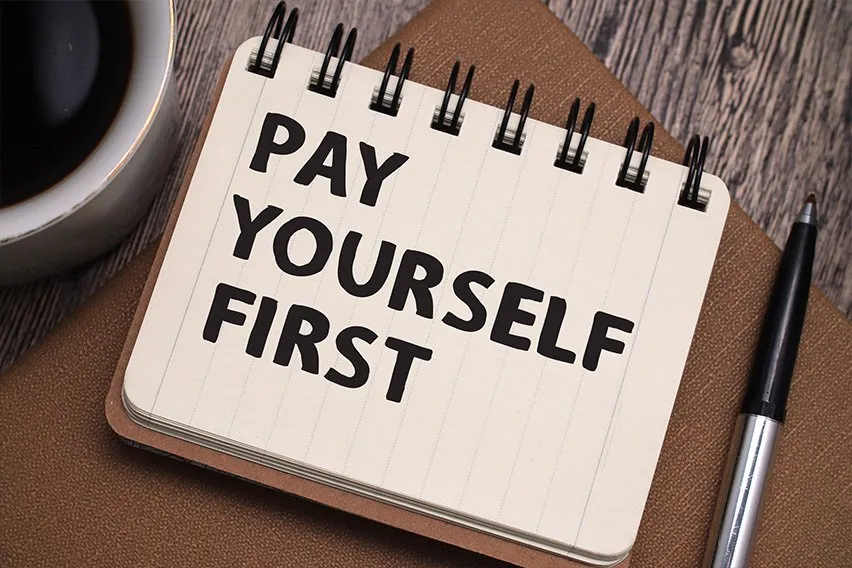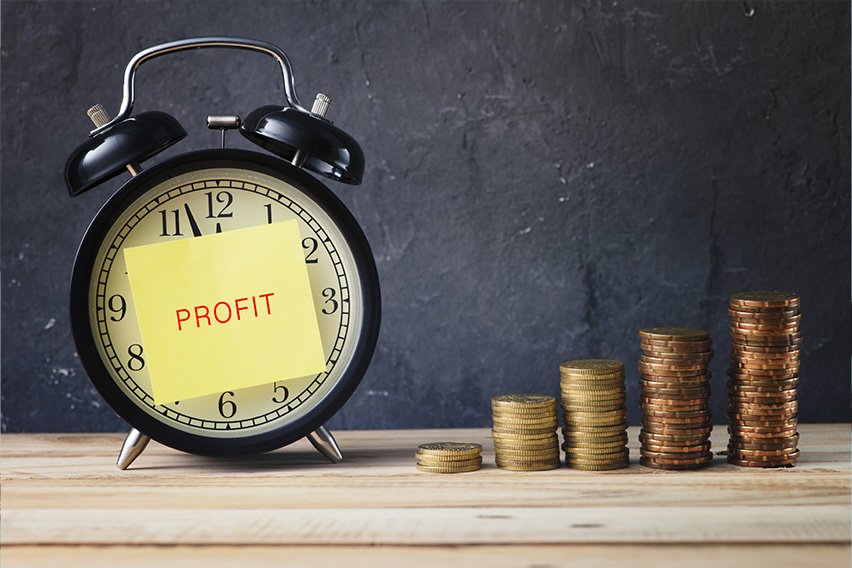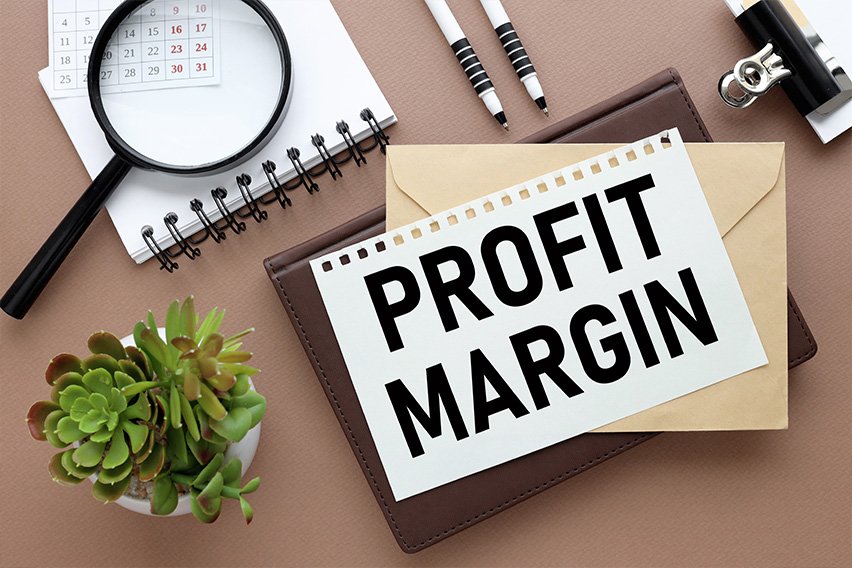A How-To Guide to Paying Yourself as a Small Business Owner

How small business owners pay themselves depends on their business structure. Most owners receive a draw, a distributive share or dividends instead of a salary. For example, sole proprietors take a draw. This means they don’t receive a regular paycheck but instead take a certain amount from a business’s profits, according to the IRS.
In this article, we’ll cover:
- How to Pay Yourself (Sole Proprietorship)
- How to Pay Yourself (Partnership)
- How to Pay Yourself from Your Business (LLC)
- How to Determine Your Pay
- Tax Considerations
How to Pay Yourself (Sole Proprietorship)
Over 70 percent of small businesses are sole proprietorships (unincorporated businesses with one owner), according to the Small Business Association (SBA). In this business structure, when the company does well, the owner gets the profits. The IRS then treats any profit as the owner’s personal income.
Sole proprietors use Schedule C of Form 1040 to deduct all overhead expenses from revenue. That number is profit and also becomes their taxable income, according to Entrepreneur.
Their taxable income is not the same as a salary as they don’t get a regular paycheck. Instead, sole proprietors withdraw a certain amount from their business—whether it’s the entirety of their profits or less. This is called a “draw.”

How to Pay Yourself (Partnership)
A partnership is a business structure with two or more “partners” or owners, according to the IRS. Partners do not take a salary or a draw. Instead, they take a distributive share (also called a “distribution”).
A distribution is a share of the profits (or losses) and the exact percentage of that share is based on the partnership agreement, a contract your lawyer can help write.
The company itself does not pay income tax on its profits. Instead, the distributions are recorded on each partner’s partnership income tax return.
How to Pay Yourself from Your Business (LLC)
An LLC (limited liability company) is a business structure where the corporation pays taxes and is considered legally separate from its owners.
Owners of LLCs are called “members.” They aren’t considered employees by the IRS and so don’t take a salary. LLCs with one member are treated like sole proprietors and take a draw (money drawn from the business). LLCs with more than one member are treated like partners and take a distribution (a share of the profits or losses).
How to Determine Your Pay
A company’s profit shouldn’t automatically be considered the owner’s take home pay—even if you’re the only employee of your business, according to Forbes.
Ask yourself the following questions to help set your pay:
- How much do your need to pay your own bills?
- What were you paid in your old job (if it was a similar role)?
- How much would you get paid doing this job at another company?
- Where is your business (a lawyer in Miami will make more than one in Mississippi)?
- What’s the size of your business (owners of larger companies get paid more)?
- How’s your company doing financially?
- Is your business planning to expand soon?
- What are your tax obligations?
- What perks do you require (health care or a retirement plan, for example)?
To make things simple, Gusto offers a free business owner salary calculator that takes many of the above factors into consideration.
Paying Yourself the Bare Minimum vs. Your Worth
Some owners only pay themselves enough to survive, especially when their business is just getting off the ground. This improves the business’s net profits and helps it break even and eventually become profitable. Owners need to calculate their mortgage costs, grocery bills and other bills and make payments to themselves accordingly.
It’s best not to rely on your business to keep you afloat, though. Save enough cash to pay your bills for at least six months, if not a year, before you quit your job and start your business, says Inc..
Still, small business owners shouldn’t get comfortable with earning very little, or even working for free. A successful business should be paying you reasonable compensation. If it isn’t doing so after the first couple of years, it’s time to reevaluate your business.
Other owners prefer to pay themselves what they’re worth from day one. This means the business’s operating expenses remain constant when it becomes profitable and there’s no need for readjustment based on a higher owner paycheck. Owners determine their worth based on factors like previous pay, location and company size.
Paying Yourself Based on the Numbers
Small business owners need to know how much they have in the bank and how much is coming in. This will help them decide how much to pay themselves.
It’s best to be conservative until you have consistent revenue, according to Inc.. Once that’s happening, look back at your revenue over the past three to six months and see what you have left to pay yourself. Compensation of $2,500 per month works out to $15 per hour for a 40 hour work week—bare bones, but a reasonable payment that’s enough to survive on.
Then set up a payroll system for yourself, making sure to deduct any taxes required by the IRS (see section below). This will make sure you get paid regularly and also prepare you for when you hire salaried employees.
Future expenses should also be considered. If you’re planning on investing in expensive new equipment you may need to take less of a paycheck.
You should also plan for raises. One way to do this is give yourself a raise when your company reaches a profit or revenue target. Not only can the company afford it, but this system will help keep an owner motivated during the difficult task of building their own business.
Paying Yourself Based on the Market
It’s likely you’ll need to pay yourself only enough to survive in the beginning. But, as a company grows and stabilizes, a founder can start researching what other business owners in his industry make, according to Inc.. Talk to other small business owners and do some research online.
For example, founders of high-growth startups in the e-commerce and tech fields often make $90,000 to $200,000 after attaining the first round of financing.
Your industry might not support these high initial numbers, though a business owner who isn’t making $100,000 by year five should look at the numbers and see why not.

Tax Considerations
The IRS decides how a small business owner gets paid and what income tax form they need to submit. For the IRS, these distinctions are based on business structure. And what taxes an owner needs to pay will also affect how much they are able to pay themselves, as well.
Self-Employment Tax
Sole proprietors, partners and LLC owners have to pay self-employment tax when they do their personal tax return. The self-employment tax covers social security and Medicare.
The tax is calculated by the IRS based on how much profit the business made. If it didn’t make any, self-employment tax isn’t payable. The self-employment tax is added to the total income tax amount due. Use Form 1040-ES from the IRS to calculate and make these payments.
Income Tax
State and federal income tax isn’t deducted from a business owner’s paycheck. This is because these payments aren’t considered salaries. Instead, owners have to submit quarterly estimated tax payments. Use Form 1040-ES from the IRS to estimate these payments.
RELATED ARTICLES

 How Long Does It Take a Business to be Profitable? A Guide
How Long Does It Take a Business to be Profitable? A Guide What Percentage of Businesses Fail in the First Year? (Plus Top Causes of Business Failure)
What Percentage of Businesses Fail in the First Year? (Plus Top Causes of Business Failure) How Long It Takes for a Small Business to Be Successful: A Year-By-Year Breakdown
How Long It Takes for a Small Business to Be Successful: A Year-By-Year Breakdown How To Calculate Profit Margin: Definition and Example
How To Calculate Profit Margin: Definition and Example Best Side Hustles. Real Ways to Earn Extra Money.
Best Side Hustles. Real Ways to Earn Extra Money. 10 Unique and Successful Business Ideas from around the World
10 Unique and Successful Business Ideas from around the World